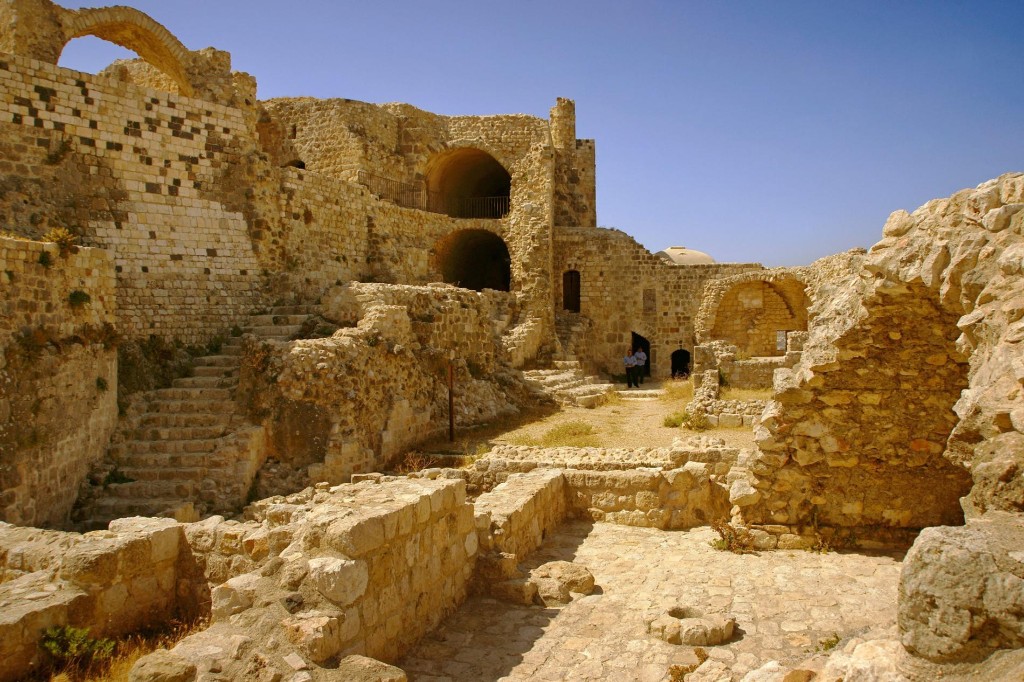Tales of a Muslim group of drug-fueled, stealth killers stir imaginations, but stray far from the true history of the Nizari Ismaili state.
The Nizaris’ origins go back to the original schism in Islam in A.D. 632, when an argument over who should succeed the Prophet Muhammad as imam, or leader, split the Muslim community into Shiites and Sunnis. Then, in the ninth century, another disagreement over leadership arose among Shiites. Followers of a leader named Ismail broke off into their own sect, the Ismailis.
A medieval painting depicts the murder of an 11th-century Persian vizier (high-ranking official) by a member of the fedayeen, who carried out surgical strikes on the enemies of the Nizari Ismailis. Photograph by CPA Media Pte Ltd, Alamy –
In 1095 an Ismaili prince named Nizar was in line to rule Cairo (al-Qāhirah). When he was passed over in favor of his younger brother, Nizar briefly seized and ruled Alexandria (al-ʾIskandariyya) but was executed. His followers fled to Persia, where they founded their own branch of Ismailism and established their own line of succession. Ismaili missionary Hassan-i-Sabbah became the Nizaris leader.
Painted as decadent heretics, the Nizari were hated by Shiite and Sunni Muslims alike. Outnumbered and surrounded by enemies on all sides, the embattled Nizari state did what it needed to survive. The sect created strongholds in the mountains of Persia and Syria and trained a select group of fighters called fedayeen, or “those who sacrifice themselves.” Fedayeen were known both for their devotion and their deadliness.
Traditional military tactics would have been useless for the outnumbered Nizari. Instead, the fedayeen carried out almost surgical strikes against selected political targets. Trained to infiltrate, kill, and submit to torture and death if necessary, the Nizari fedayeen gained an outsized reputation. Christian Crusaders, newly arrived in the Holy Land, also learned to fear the fedayeen, though the Nizari did form alliances with Crusaders in some situations. (Discover why the Crusades led to the rise and fall of the Templar.)
Historians believe that Western observers, who did not understand why the Nizari fought with guerrilla tactics, assumed they were under the thrall of some kind of drug, like hashish. The Arabic word Hashishin, or “hashish users,” was applied pejoratively to the Nizaris by other Muslim groups, then adopted by Crusaders and westernized as Assassins. Eventually, the misnomer morphed into the modern English word for a paid murderer.
(Illustration not reproducible)
European travelers like Marco Polo spread fanciful stories about the Nizari Ismailis, including the story of Old Man of the Mountain, who would allegedly drug men to make them killers. A 15th century miniature depicts the Old Man of the Mountain meeting with his followers. Photograph by Universal History Archive, Getty
Marco Polo and others circulated lurid legends about the Assassins, including claims that the fedayeen were in thrall to the Old Man of the Mountain, a successor of Hassan who was rumored to use drugs to intoxicate the young men, then trick them into fighting with promises of a decadent false paradise he created within his fortress walls. “Rooted in fear, hostility, ignorance and fantasy, myths of the Ismailis have fired the popular imagination of countless generations,” writes historian Farhad Daftary.
The Nizari Ismaili state managed to survive for 166 years. But it could not withstand the Mongols, who began their conquest of the Islamic world in 1219 and pushed the Nizaris out of fortress after fortress. Finally, in the face of the loss of all of their strongholds, the surviving Nizaris fled.
Centuries after the Nizari state fell, the Ismaili religious sect endures. Today, up to 15 million Ismailis can be found in more than 25 countries around the globe, and Ismailis are the second-largest group of Shia Muslims. The majority of Ismailis are still Nizari and accept Shāh Karim al-Husayni as Aga Khan, an honorary title used by Nizari Ismaili leaders since the 19th century.
While the days of targeted killings are long past, salacious and incorrect legends of the Nizari live on in popular culture: The Assassin’s Creed series of video games has become one of the best-selling video game franchises of all time—but the secretive, sensationalist picture it paints of the Assassins has no basis in reality.
–
Latest In History
–
(For the source of this, and many other equally intriguing articles, please visit: https://www.nationalgeographic.com/history/reference/people/medieval-order-assassins-islam/)









